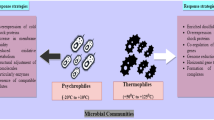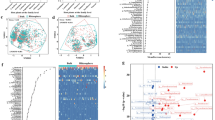Abstract
We report the results of a comparative analysis of the sequences of multicomponent monooxygenases, a family of enzymes of great interest for bioremediation of contaminated soil. We show that their function, in terms of substrate specificity, can be deduced from their subunit organization and composition, that rearrangements of subunits as well as recruitments of new ones can be used to explain their different properties and functionalities, and that the observed pattern can be rationalized invoking a number of evolutionary events, including horizontal gene transfer. Our analysis highlights the plasticity and modularity of this family of enzymes, which might very well be the reason underlying the extremely rapid emergence of new bacterial strains able to grow on contaminated soils.
Similar content being viewed by others
Author information
Authors and Affiliations
Rights and permissions
About this article
Cite this article
Notomista, E., Lahm, A., Di Donato, A. et al. Evolution of Bacterial and Archaeal Multicomponent Monooxygenases . J Mol Evol 56, 435–445 (2003). https://doi.org/10.1007/s00239-002-2414-1
Received:
Accepted:
Issue Date:
DOI: https://doi.org/10.1007/s00239-002-2414-1




